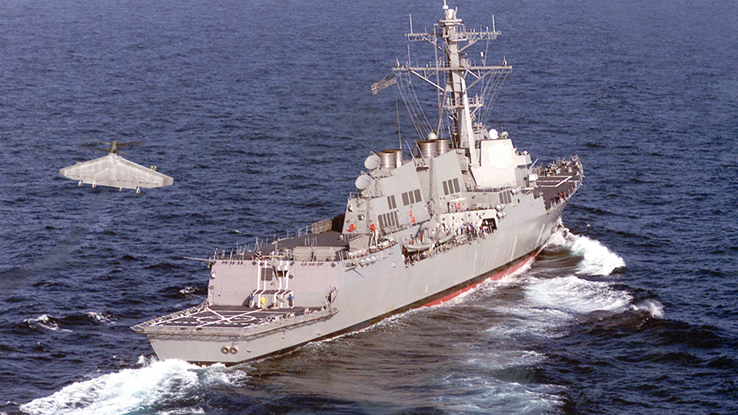The drone - still in the design phase - will be able to land and take off like a helicopter, but will fly like a normal airplane
For years, the U.S. Army and Navy have been designing and building military drones for use on battlefields around the world. For this reason, investments in the sector, through DARPA, are always very large. DARPA's goal was to create an unmanned aircraft with a flight range greater than a helicopter but without the need for an aircraft carrier-style runway for takeoff. Thus was born the project known by the code name TERN (Tactically Exploited Reconnaissance Node) and being carried out by DARPA (Defense Advanced Research Projects Agency), the government agency of the U.S. Department of Defense responsible for the development of new technologies for military use, in collaboration with the Office of Naval Research of the Navy (ONR). The drone has already passed two tests and is heading with spread wings toward the third and final step with the first test flight of two prototypes in 2018.
A middle ground between a helicopter and an airplane
The drone in question solves two major problems at the military level. If a helicopter is able to take off vertically from a normal ship and occupies - all things considered - little space, it has the disadvantage of not guaranteeing great autonomy. It is not and will never be a real military aircraft. D’altro canto, un vero velivolo militare richiede una pista di decollo e di atterraggio, quindi una portaerei che non solo è ingombrante da manovrare, ma anche molto costosa. Questo drone unisce i vantaggi di un elicottero e di un aereo, oltre al dettaglio da non sottovalutare, che è in grado di volare senza pilota a bordo. È un classico drone, ma il primo della sua “specie”.
 Fonte foto: Northrop Grumman
Fonte foto: Northrop Grumman
Il drone decolla dal ponte di una piccola nave
Test di decollo verticale quasi conclusi
L’obiettivo era, infatti, quello di dotare la Marina Militare e il Corpo dei Marine degli Stati Uniti di un velivolo in grado di essere trasportato su navi di piccole dimensioni per operazioni di intelligence, sorveglianza e ricognizione. E il risultato è il programma Tern, un drone che decolla e atterra in verticale e vola in orizzontale. Un’idea semplice quanto geniale. Tern, moreover, is designed to fly 600 nautical miles (about 1,111 km) and carry a load of up to 454 kg. The drone, as mentioned, has already passed two very important tests. The first, with a General Electric engine, to verify its ability to fly both vertically and horizontally, while the second to check the operation of the software that manages the vertical takeoff, the transition to horizontal flight, and then switch back to vertical flight for landing. The testing and construction of Tern is entrusted to the Northrop Grumman company. The first full test flight of the two prototypes is scheduled for 2018.
(opening video taken from YouTube)
Some of the videos in this section were taken from the Internet, thus rated public domain. If the subjects present in these videos or the authors had something against the publication, just make a request for removal by sending an email to: [email protected]. We will provide to the cancellation of the video in the shortest time possible.
